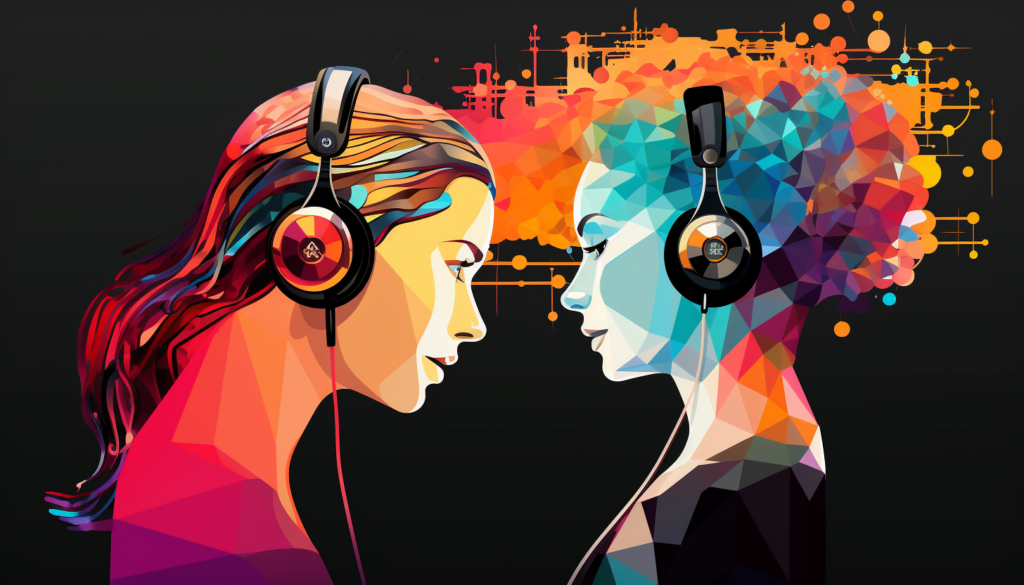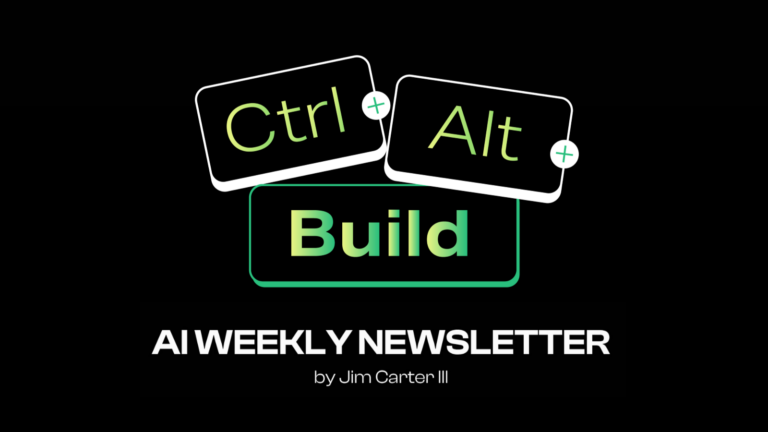01: Silicon vs. Soul

Loneliness and depression are real issues that so many people face.
Having someone to talk to about your joys and struggles in almost every aspect of life can be incredibly comforting. But what if that someone is not human but an AI? It’s not science fiction anymore; AI companions are here and becoming increasingly sophisticated.
In a recent podcast I was being interviewed on, the topic of AI companionship came up, and it was a profoundly engaging discussion. We got real, joked a bit, and discussed the nuances and facets of forming relationships with AI.
My stance? If you’re lonely, depressed, and need a companion, what’s stopping you from using AI to have a conversation and get what’s needed out of your head?
These companions are popping up like wildfire. One that I’ve tried and frequently demo to show how quickly the technology is advancing is “Call Annie,” an app developed by Animato. It utilizes GPT to engage in human-like conversations through an avatar named Annie. Users can talk to Annie about anything via phone or video call, and the dialogue is in near real-time. This app is free, community-driven by its discord, and a fun social experiment.
On the other hand, AI companionship is not just about conversation; it’s also evolving into a multifaceted social experience. CarynAI, for instance, lets users interact with an AI version of influencer Caryn Marjorie. The developers on this project trained this AI on over 2,000 hours of her actual content to re-create her unique voice, persona, and behavior. CarynAI charges $1/minute for access, has over 15,000 people on the waitlist, and is projected to bring this 23-year-old influencer upwards of $5 million monthly in revenue.
One of these chatbots is not like the other.
This fantastic a16z article 🔗 highlights that AI companions can serve various roles, from personal assistants to creative collaborators. They can help with tasks, provide information, or even engage in creative projects. The possibilities are vast.
Now, let’s talk about the obvious question. Do I even need to say it?
From a mental health perspective, AI companions can provide a listening ear to those who need it. They are always available and can engage in conversations on any topic, and particularly beneficial for individuals who are lonely or depressed.
However, we have to recognize the limitations. These AIs are incapable of human emotions and cannot replace the emotional support from human relationships. There’s also a concern about the depiction of AI companions, especially regarding gender representation and stereotypes.
🧠 Here’s where the distinction between roles comes into play.
While AI companions can serve various roles, they differ from having a coach, acquaintance, girlfriend or partner. On the topic of a partner specifically, a romantic partner provides emotional depth, shared experiences, and a level of intimacy that AI cannot replicate. On the other hand, AI companions can offer assistance, information, and a form of social interaction, but without the emotional depth of human relationships.
As AIs evolve, society needs ongoing discussions about the ethical implications. It’s about finding the balance and understanding that while AI can offer companionship, it’s not a replacement for genuine human connection. They can be a source of comfort and assistance, but it’s crucial to navigate this landscape with awareness and consideration for the values that make us human.
02: The AI-Physics Connection

Hold onto your lab coats, the world of AI is colliding with physics.
Let’s take a quick nerdy science tour on the latest innovations that make us all feel like we’re living in a sci-fi movie.
- AI and Physics in Computer Vision
Researchers at UCLA have created a hybrid system that combines AI with physics to make sense of the world in high definition. It’s like giving AI a pair of super-smart glasses that see and understand how things work. Imagine the possibilities: from self-driving cars that also predict traffic flow to robots that can interact with their environment like humans because they sense awareness.
Why it’s awesome: AI just got a Ph.D. in Physics and can run its own experiments.
Source: UCLA Samueli School of Engineering 🔗 - Picture Perfect with Physics
Ever tried to take a picture and wished it could look more…real? Scientists have found a way to make AI understand how images are formed by incorporating physics into the mix. This means that AI can now create or change pictures that are not just pretty but are also super accurate representations of the real world.
Why it’s awesome: Your selfies, trips & holiday photos are about to get a future upgrade.
Source: Nature Machine Intelligence 🔗 - AI Gets Real World Physics-Savvy
Scientists from UCLA and the United States Army Research Laboratory are teaching AI about the physical world. By incorporating physics-based awareness into AI-powered computer vision, AI can now interact with its surroundings in a way that’s more in tune with how things work. It’s like AI has developed a sixth sense of physics!
Why it’s awesome: AI systems that understand the physical world open massive advancements in robotics, healthcare, and gaming amongst others.
Source: Knowridge Science Report 🔗 - PhyCV: The Physics-Inspired Computer Vision Library
Imagine a library, but instead of books, it’s filled with algorithms inspired by physics. That’s what PhyCV is and it is a new resource for engineers to work with. Developed by researchers at UCLA, this Python library uses the laws of physics to analyze images. It’s like AI is learning to see the world through the eyes of a physicist.
Why it’s awesome: From enhancing medical imaging to creating hyper-realistic video games, this could revolutionize how images are used and analyzed and be readily available to developers to implement and contribute to.
Source: MarkTechPost 🔗
🧠 Now, I challenge you to take a step back and think big.
While these innovations might seem to belong in a lab or a tech giant’s headquarters, what does it mean for you and the world around you? It’s easy to dismiss these advancements as something that doesn’t directly impact our daily lives, but let’s consider the possibilities.
Imagine a world where AI, armed with an understanding of physics, can predict natural disasters accurately, saving countless lives. Or consider a farmer using AI-powered drones that understand soil physics to optimize crop yields. These are real-world applications that can change lives and reshape industries. It’s about the ripple effect.
When technology advances, it creates opportunities that can trickle down to create real solutions for everyday challenges. So, let’s not just be observers but thinkers and dreamers.
03: Midjourney 5.2, A New Perspective

The world we view online is about to get much more immersive with the introduction of Midjourney’s 5.2 update, which brings many new features, including the much-anticipated “Zoom Out” tool.
The Zoom Out tool is wildly impressive and valuable for the creative process. It allows creators to expand upon an original image, broadening its scope to a wider scale while maintaining the original image details.
Working with Midjourney can initially feel overwhelming, but it is wildly powerful when you get the hang of it.
Quick Midjourney 5.2 crash course: Midjourney will kick out four visual iterations based on the input you wish to create after inputting a prompt. After finding one you like, you can “upscale” the image rendering it in greater detail. From here, with the latest version, you’ll now see three buttons underneath the upscaled image labeled “Zoom Out 2x,” “Zoom Out 1.5x,” and “Custom Zoom.” This tool allows endless zooming options, creating a visually coherent environment that takes ideas to another level. You can even ‘remix’ the prompts to blend wild creations that would have never been considered previously to create something unique.
The GIF above is a quick example of what’s possible, and you can view the HD version here 🔗.
🧠 But what does this mean for Generative AI, and how you use it?
The Zoom Out tool is a perfect example of how AI is not just about creating something new but also about enhancing and expanding what already exists. It shows that AI can push the boundaries of creativity, enabling us to see things from a broader perspective and explore new possibilities.
For businesses, this means creating more immersive and engaging content. The Zoom Out tool allows businesses to create eye-catching and interesting visuals, whether for marketing materials, product designs, or social media posts.
These are exciting times for AI and creativity, and I can’t wait to see what comes next.
If you’re looking to dive head first into using AI tools to make a difference for your business, my latest group program starts Thursday, and we cover Midjourney and working with your content just like this.
